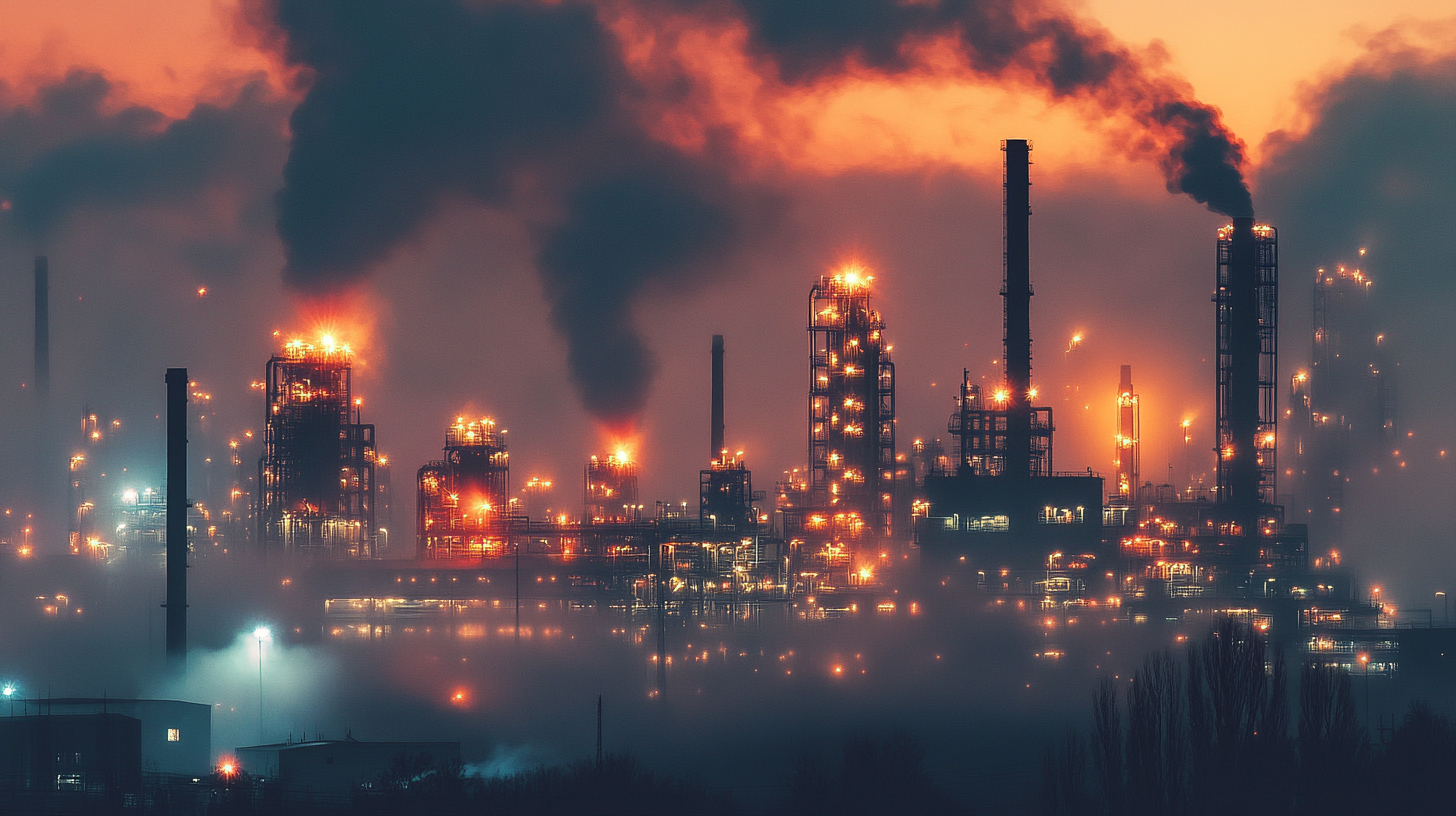
-
Home
-
Product Center
-
Application
-
Support
-
JT Cloud
-
About Us
-
Contact Us
Leave Your Message

As we approach 2025, the need for effective Thermal Environment solutions has become paramount in various industries, driven by the increasing emphasis on sustainability and energy efficiency. According to a recent market analysis by Allied Market Research, the global thermal management market is expected to reach USD 25.63 billion by 2027, growing at a compound annual growth rate (CAGR) of 8.1% from 2020. This growth reflects the demand for advanced thermal management technologies and products that cater to diverse applications, ranging from data centers to automotive industries. Understanding the features and applicability of different thermal environment products is essential for stakeholders aiming to navigate these trends effectively. This blog will provide a comprehensive guide to the characteristics and suitable applications of various thermal solutions, ensuring that businesses can make informed decisions that align with the evolving market landscape.

In the rapidly evolving thermal solutions market, the significance of import and export certification cannot be overstated. According to the International Organization for Standardization (ISO), nearly 80% of companies in the thermal industry have reported facing barriers related to certification processes. These certifications not only ensure that products meet rigorous quality and safety standards but also enhance market access, particularly in highly regulated regions. For instance, the U.S. Department of Energy mandates strict compliance for energy-efficient thermal solutions, leading to a reported 25% increase in revenue for certified companies in 2022.
Furthermore, the burgeoning demand for eco-friendly thermal solutions is driving the need for robust certification practices. A report by MarketsandMarkets predicts that the global thermal insulation market will grow from $29.39 billion in 2020 to $43.63 billion by 2026, highlighting an increasing trend toward sustainable practices. Import and export certifications such as the EN 13063 standard are crucial for manufacturers aiming to participate in this growth. Ensuring compliance with such standards not only fosters trust among consumers but also positions companies to thrive in competitive landscapes, making import and export certifications a vital component of successful market navigation in 2025.

As we look ahead to 2025, the landscape of thermal environment solutions is rapidly evolving, shaped by technological advancements and changing consumer demands. Key data points indicate a significant shift towards energy efficiency, with more companies prioritizing sustainable practices. A notable trend is the integration of IoT devices in thermal management systems, allowing real-time monitoring and improved energy distribution, ultimately leading to cost savings and reduced environmental impact.
Tip: Invest in IoT-enabled thermal solutions to enhance your energy efficiency. These systems not only optimize performance but also supply valuable insights into usage patterns, enabling smarter operational decisions.
Additionally, the emphasis on regulatory compliance is becoming increasingly critical. Companies are now facing stricter guidelines related to energy consumption and emissions, pushing them to adopt innovative thermal solutions. This trend underscores the importance of staying informed about regulatory changes and aligning business strategies accordingly.
Tip: Regularly review regulatory updates in your industry. Being proactive will help you adapt your thermal environment solutions to meet compliance, avoiding potential fines and enhancing your market reputation.
As the thermal industry evolves, regulatory compliance has become a crucial focus for companies looking to thrive in the market. In 2025, businesses must navigate a complex landscape of certification requirements that ensure products meet safety and environmental standards. According to a recent report by the International Energy Agency (IEA), nearly 40% of energy-related emissions come from thermal processes across various industries, accentuating the need for stringent compliance measures. Companies that align their practices with these regulations can not only reduce their carbon footprint but also gain a competitive edge in increasingly eco-conscious markets.

Meeting certification requirements, such as ISO 14001 for environmental management, is essential for businesses aiming to establish credibility and foster trust with consumers and regulators alike. The Global Thermal Management Market report estimates that the market is set to grow from $3.36 billion in 2022 to $5.12 billion by 2027, driven in part by the push for regulatory adherence. In this burgeoning landscape, firms that proactively engage with certification processes will not only mitigate risks associated with non-compliance but also position themselves as leaders in innovation and sustainability within the thermal sector.
As we move into 2025, the landscape of thermal environment solutions is being reshaped by innovative technologies and stringent certifications. One of the most significant advancements is the integration of smart materials that adjust thermal properties in real-time. These materials not only improve energy efficiency but also enhance occupant comfort by maintaining optimal temperatures in diverse settings. Minimalist design approaches are further complemented by intelligent climate control systems, leveraging data analytics and IoT connectivity to optimize energy usage, thereby reducing environmental impact.
Additionally, the certification standards for thermal solutions are evolving to meet changing regulatory requirements and consumer expectations. Innovations like phase-change materials (PCMs) and advanced insulation techniques are being validated through rigorous testing protocols, which ensure their effectiveness and sustainability. As companies strive to meet these higher standards, collaboration between technology providers and regulatory bodies will be crucial. Ultimately, businesses that embrace these innovative technologies will not only comply with emerging certifications but also position themselves as leaders in creating sustainable and efficient thermal environments for the future.
| Technology | Impact on Thermal Solutions | Certification Standards | Projected Market Growth (%) |
|---|---|---|---|
| Phase Change Materials | Enhanced thermal regulation in building materials | ISO 14001 | 25% |
| Smart Thermostat Systems | Optimized energy consumption and user comfort | Energy Star | 30% |
| Reflective Insulation | Reduced heat transfer for energy efficiency | ASTM C1224 | 20% |
| Geothermal Heating Systems | Sustainable temperature regulation | ISO 50001 | 35% |
| Thermal Imaging Technology | Improved energy audit efficiency | EN 16247 | 15% |
As we approach 2025, businesses in the thermal environment solutions sector must adopt adaptive strategies that respond effectively to emerging market demands. According to a report by MarketsandMarkets, the global market for thermal management systems is projected to grow from $8.1 billion in 2020 to $12.6 billion by 2025, at a CAGR of 9.4%.
This growth is driven by the increasing demand for energy-efficient heating and cooling solutions across various industries, including construction, automotive, and manufacturing.
To align business practices with these trends, companies should prioritize innovation in product offerings that integrate smart technologies. The integration of IoT (Internet of Things) in thermal management systems is predicted to enhance efficiency and provide real-time monitoring capabilities, satisfying the growing consumer expectation for sustainability and performance.
Furthermore, a study from Frost & Sullivan highlights that investments in R&D within this sector can lead to a competitive edge, as businesses that invest in developing advanced materials and smart controls will meet the anticipated 30% increase in consumer interest for eco-friendly thermoregulation solutions. By focusing on these strategies, companies can position themselves effectively for the evolving landscape of 2025 and beyond.